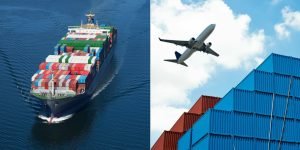Call Us:
+44(0)2039579445
+254 111 81 81 81
Mail Us:
info@tripleafreight.co.uk
Triple A
 In today’s interconnected world, businesses face a pivotal decision when transporting Sea Freight and Air Freight goods. This decision holds significant strategic implications, impacting cost, speed, reliability, and environmental sustainability. Let’s delve into the intricacies of sea and air freight to understand why each option may be the optimal choice depending on various factors, and how your decision-making can shape the efficiency and sustainability of your supply chain.
In today’s interconnected world, businesses face a pivotal decision when transporting Sea Freight and Air Freight goods. This decision holds significant strategic implications, impacting cost, speed, reliability, and environmental sustainability. Let’s delve into the intricacies of sea and air freight to understand why each option may be the optimal choice depending on various factors, and how your decision-making can shape the efficiency and sustainability of your supply chain.
Comments
Thanks for sharing. I read many of your blog posts, cool, your blog is very good. binance konto skapande
Your point of view caught my eye and was very interesting. Thanks. I have a question for you. https://accounts.binance.info/en-NG/register-person?ref=YY80CKRN